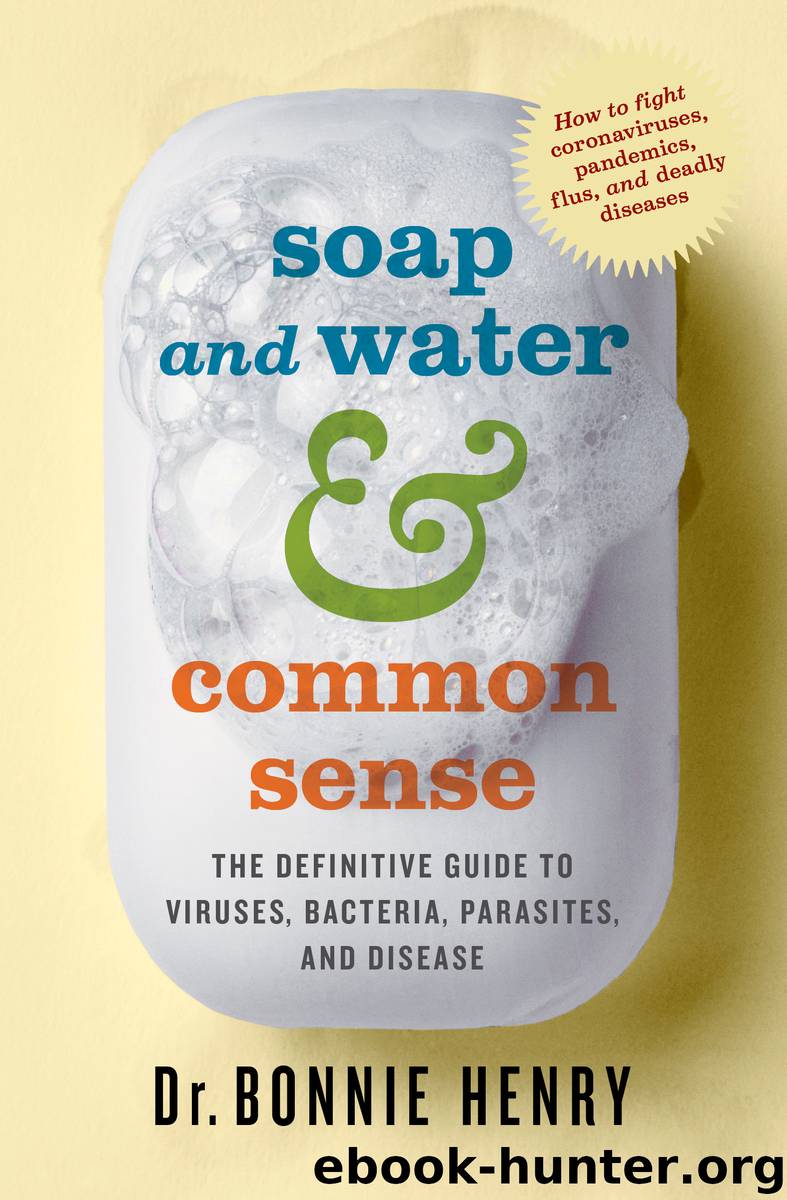Soap and Water & Common Sense by Dr. Bonnie Henry

Author:Dr. Bonnie Henry
Language: eng
Format: epub
Publisher: House of Anansi Press Inc
Food, Bugs, and Climate Change: Vibrio parahaemolyticus
The final bacterium we will look at is one that grows in the ocean. A gradual increase in the temperature of the world’s oceans has had some interesting effects on the food we eat. On average, temperatures in the northern oceans have warmed by one to three degrees in the past hundred years. This increase might not seem dramatic but it has had an impact on the bugs that live in the oceans and on the fish and shellfish we eat.
One compelling example of the impact of global warming and increasing ocean temperatures is the emergence of the bacterium Vibrio parahaemolyticus in the northern waters off the coast of British Columbia and Washington State. These cold waters are the perfect environment for the cultivation of oysters. But in the past few years there have been several reports of disease in people who have consumed raw oysters, and local public health officials traced these outbreaks back to the coastal oyster beds, areas that previously were thought not to be warm enough for the bacteria to grow.
Vibrio parahaemolyticus, a cousin to the bug that causes cholera, lives in salt water only and thrives when water temperatures rise. In many places this means during the summer months — May, June, July, and August — which may have given rise to the sage advice never to eat raw oysters in months without an R in them. Vibrio is a bacterium that causes an intestinal infection, the symptoms of which include explosive watery diarrhea and abdominal cramps that usually start within twelve to twenty-four hours of eating the contaminated food. In most people the illness lasts only two to three days, but in some the infection can be more severe, causing high fever, bloody diarrhea, and dehydration that can last for as long as a week. Rarely, however, do people die from this infection.
About 4,500 cases of illness from Vibrio parahaemolyticus are reported in the United States every year, but this is likely the tip of the iceberg, since most infections are short-lived and often people don’t bother to visit their doctor or report their symptoms. When cases are reported, the illness is most often traced back to consumption of raw or undercooked fish and shellfish, especially oysters. In 2007 fifteen cases of Vibrio were reported in British Columbia, and all of them were traced back to raw oysters — most were from oysters served at some of the fanciest restaurants in the area!
Shellfish are an excellent source of protein and are high in essential minerals and low in calories, fat, and cholesterol. Oysters, clams, scallops, and mussels are all commonly found and cultivated in salt water, and all are sensitive to their marine environment. Luckily, as with many of the infections we have discussed, cooking shellfish thoroughly kills Vibrio parahaemolyticus. The other way to protect your health is to make sure you refrigerate or freeze shellfish until you are ready to eat it, so the bugs don’t have a chance to grow.
Download
This site does not store any files on its server. We only index and link to content provided by other sites. Please contact the content providers to delete copyright contents if any and email us, we'll remove relevant links or contents immediately.
Periodization Training for Sports by Tudor Bompa(8170)
Why We Sleep: Unlocking the Power of Sleep and Dreams by Matthew Walker(6618)
Paper Towns by Green John(5091)
The Immortal Life of Henrietta Lacks by Rebecca Skloot(4525)
The Sports Rules Book by Human Kinetics(4294)
Dynamic Alignment Through Imagery by Eric Franklin(4118)
ACSM's Complete Guide to Fitness & Health by ACSM(3989)
Kaplan MCAT Organic Chemistry Review: Created for MCAT 2015 (Kaplan Test Prep) by Kaplan(3940)
Introduction to Kinesiology by Shirl J. Hoffman(3726)
Livewired by David Eagleman(3684)
The Death of the Heart by Elizabeth Bowen(3552)
The River of Consciousness by Oliver Sacks(3541)
Alchemy and Alchemists by C. J. S. Thompson(3451)
Bad Pharma by Ben Goldacre(3357)
Descartes' Error by Antonio Damasio(3230)
The Emperor of All Maladies: A Biography of Cancer by Siddhartha Mukherjee(3066)
The Gene: An Intimate History by Siddhartha Mukherjee(3047)
The Fate of Rome: Climate, Disease, and the End of an Empire (The Princeton History of the Ancient World) by Kyle Harper(3003)
Kaplan MCAT Behavioral Sciences Review: Created for MCAT 2015 (Kaplan Test Prep) by Kaplan(2940)
